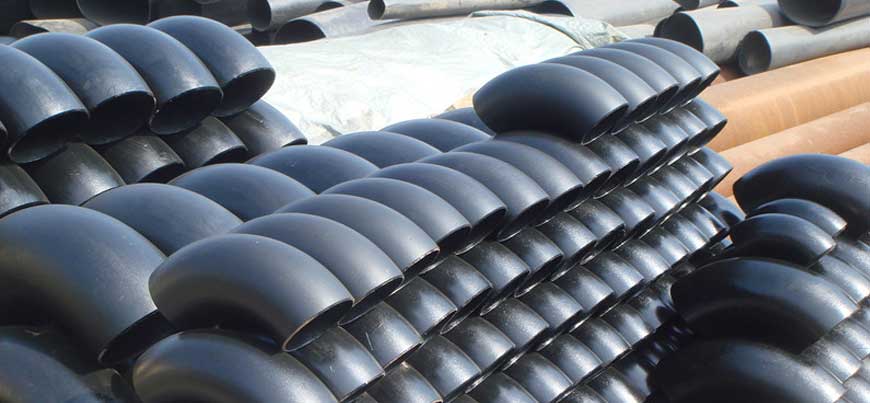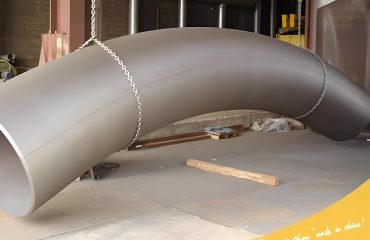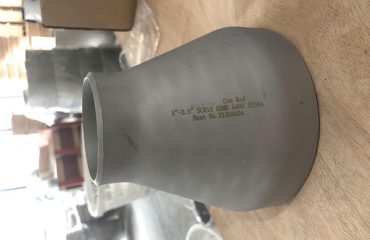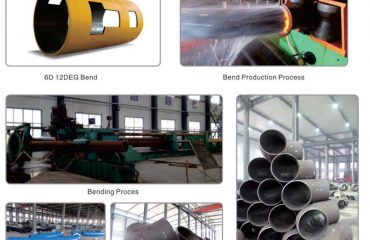
ASTM A860 WPHY 52, 60, 65, 70 Pipe Fittings: A Comprehensive Guide
ASTM A860 WPHY pipe fittings are available in various grades to meet the specific requirements of different applications. The grades include:
- ASTM A860 WPHY 42
- ASTM A860 WPHY 46
- ASTM A860 WPHY 52
- ASTM A860 WPHY 56
- ASTM A860 WPHY 60
- ASTM A860 WPHY 65
- ASTM A860 WPHY 70
Introduction to ASTM A860 WPHY 52, 60, 65, 70 Pipe Fittings
ASTM A860 is a specification that covers wrought high-strength low-alloy (HSLA) butt-welding pipe fittings for use in high-pressure oil and gas transmission and distribution systems. The fittings manufactured under this specification are commonly referred to as ASTM A860 WPHY (Wrought Pipe High Yield) fittings. This comprehensive guide will provide an overview of ASTM A860 WPHY 52, 60, 65, 70 pipe fittings, including their specifications, properties, and applications.
Specifications of ASTM A860 WPHY 52, 60, 65, 70 Pipe Fittings
-
Material: ASTM A860 WPHY 52, 60, 65, 70 pipe fittings are made from high-strength low-alloy (HSLA) steels. These steels are specifically designed to provide excellent mechanical properties, including high yield strength and impact toughness.
-
Mechanical Properties: ASTM A860 WPHY 52, 60, 65, 70 pipe fittings have specified minimum yield strength and tensile strength requirements. The minimum yield strength ranges from 52,000 psi (360 MPa) for WPHY 52 fittings to 70,000 psi (485 MPa) for WPHY 70 fittings. The minimum tensile strength ranges from 66,000 psi (455 MPa) for WPHY 52 fittings to 90,000 psi (620 MPa) for WPHY 70 fittings.
-
Dimensions: ASTM A860 WPHY 52, 60, 65, 70 pipe fittings are available in various sizes and dimensions, ranging from 1/2″ to 48″ in diameter. The fittings are manufactured in accordance with ASME B16.9, which provides the standard dimensions and tolerances for butt-welding fittings.
-
End Connections: ASTM A860 WPHY 52, 60, 65, 70 pipe fittings can be supplied with different end connections, including butt-weld, socket-weld, and threaded connections. The selection of the appropriate end connection depends on the specific application and piping system requirements.
Chemical Requirements of ASTM A860 WPHY Pipe Fittings
Chemical Composition: The chemical composition of ASTM A860 WPHY 52, 60, 65, 70 pipe fittings varies depending on the specific grade. However, the general composition includes elements such as carbon, manganese, phosphorus, sulfur, silicon, nickel, chromium, molybdenum, vanadium, and copper. The precise composition ensures the desired mechanical properties of the fittings.
To ensure the superior quality and performance of ASTM A860 WPHY pipe fittings, they must meet specific chemical requirements. The chemical requirements vary depending on the grade of the fittings. Here is a table showcasing the chemical element composition for ASTM A860 WPHY 42, 52, 60, 65, and 70:
| Chemical Element | Composition % Heat Analysis (Maximum or Range) |
|---|---|
| Carbon | 0.20A |
| Manganese | 1.00-1.45 |
| Phosphorus | 0.030 |
| Sulfur | 0.010 |
| Silicon | 0.15-0.40B |
| Nickel | 0.50C |
| Chromium | 0.30C |
| Molybdenum | 0.25C |
| Copper | 0.35C |
| Titanium | 0.05 |
| Vanadium | 0.10 |
| Columbium | 0.04 |
| Vanadium plus Columbium | 0.12 |
| Aluminum | 0.06 |
A: The carbon equivalent (CE) calculated by the following formula shall not exceed 0.42%:
CE = C + Mn/6 + (Cr + Mo + V)/5 + (Ni + Cu)/15
B: If vacuum carbon deoxidation is used, silicon shall not exceed 0.10% by heat analysis and 0.12% by product analysis.
C: The sum of Ni + Cr + Mo + Cu shall not exceed 1.0%.C:Ni+Cr+Mo+Cu之和不得超过1.0%。
Types of ASTM A860 WPHY 52, 60, 65, 70 Pipe Fittings
ASTM A860 WPHY 52, 60, 65, 70 pipe fittings are available in various types to suit different piping system configurations and requirements. Some of the commonly used types include:
-
Elbows: Elbows are used to change the direction of the flow in a piping system. ASTM A860 WPHY 52, 60, 65, 70 elbows are available in different angles, such as 45 degrees, 90 degrees, and 180 degrees, to accommodate various piping layouts.
-
Tees: Tees are used to branch off a pipeline into two or more directions. ASTM A860 WPHY 52, 60, 65, 70 tees are available in equal and reducing configurations, allowing for flexibility in designing and constructing piping systems.
-
Reducers: Reducers are used to connect pipes of different sizes. ASTM A860 WPHY 52, 60, 65, 70 reducers are available in concentric and eccentric configurations, providing options for maintaining the same or different pipe diameters.
-
Caps: Caps are used to seal the end of a pipe. ASTM A860 WPHY 52, 60, 65, 70 caps are available in different sizes and designs, ensuring a secure and leak-free closure for the pipe.
-
Crosses: Crosses are used to connect four pipes at right angles. ASTM A860 WPHY 52, 60, 65, 70 crosses are available in equal and reducing configurations, allowing for the distribution of flow in multiple directions.
These are just a few examples of the types of ASTM A860 WPHY 52, 60, 65, 70 pipe fittings available. The selection of the appropriate fitting type depends on factors such as the piping system design, fluid characteristics, and operational requirements.
Applications of ASTM A860 WPHY 52, 60, 65, 70 Pipe Fittings
ASTM A860 WPHY 52, 60, 65, 70 pipe fittings are widely used in various industries and applications due to their high strength and excellent mechanical properties. Some of the common applications of these fittings include:
-
Oil and Gas Industry: ASTM A860 WPHY 52, 60, 65, 70 pipe fittings are extensively used in the oil and gas industry for high-pressure transmission and distribution systems. These fittings are suitable for handling corrosive fluids, such as crude oil and natural gas, and can withstand the demanding conditions of offshore and onshore installations.
-
Petrochemical Industry: The petrochemical industry requires reliable and durable pipe fittings to transport various chemicals and gases. ASTM A860 WPHY 52, 60, 65, 70 fittings are ideal for petrochemical applications due to their high strength and resistance to corrosion.
-
Power Generation: Power plants, including thermal power plants and nuclear power plants, rely on robust piping systems to transport steam, water, and other fluids. ASTM A860 WPHY 52, 60, 65, 70 pipe fittings are commonly used in power generation facilities due to their ability to withstand high temperatures and pressures.
-
Refining and Processing: Refineries and processing plants require pipe fittings that can handle the harsh conditions of refining and processing operations. ASTM A860 WPHY 52, 60, 65, 70 fittings are suitable for applications such as distillation, cracking, and fractionation, where high-strength fittings are essential.
-
Shipbuilding: Shipbuilding industry requires pipe fittings that can withstand the corrosive environment of marine applications. ASTM A860 WPHY 52, 60, 65, 70 fittings are commonly used in shipbuilding for various systems, including fuel lines, cooling systems, and ballast systems.
These are just a few examples of the applications where ASTM A860 WPHY 52, 60, 65, 70 pipe fittings are used. Their versatility, high strength, and resistance to corrosion make them a preferred choice in many industries.
Frequently Asked Questions (FAQ)
Q1: What is the difference between ASTM A860 WPHY 52, 60, 65, 70 pipe fittings?
A1: The main difference between ASTM A860 WPHY 52, 60, 65, 70 pipe fittings lies in their minimum yield strength and tensile strength requirements. WPHY 52 fittings have a minimum yield strength of 52,000 psi and a minimum tensile strength of 66,000 psi, while WPHY 70 fittings have a minimum yield strength of 70,000 psi and a minimum tensile strength of 90,000 psi.
Q2: Can ASTM A860 WPHY 52, 60, 65, 70 pipe fittings be used for high-temperature applications?
A2: Yes, ASTM A860 WPHY 52, 60, 65, 70 pipe fittings are suitable for high-temperature applications. These fittings are designed to withstand elevated temperatures and maintain their mechanical properties under such conditions.
Q3: Are ASTM A860 WPHY 52, 60, 65, 70 pipe fittings resistant to corrosion?
A3: Yes, ASTM A860 WPHY 52, 60, 65, 70 pipe fittings have good corrosion resistance. However, the level of corrosion resistance can vary depending on the specific grade and the environment in which the fittings are used. In highly corrosive environments, additional measures such as coatings or corrosion inhibitors may be required.
Q4: What are the advantages of using ASTM A860 WPHY 52, 60, 65, 70 pipe fittings?
A4: The advantages of using ASTM A860 WPHY 52, 60, 65, 70 pipe fittings include high strength, excellent mechanical properties, resistance to corrosion, and suitability for high-pressure applications. These fittings are also available in various types and sizes, providing flexibility in designing and constructing piping systems.
Q5: Where can I purchase ASTM A860 WPHY 52, 60, 65, 70 pipe fittings?
A5: ASTM A860 WPHY 52, 60, 65, 70 pipe fittings can be purchased from reputable manufacturers, distributors, and suppliers of pipe fittings. It is recommended to source the fittings from trusted suppliers who can provide certified products that meet the required specifications and standards.
Conclusion
ASTM A860 WPHY 52, 60, 65, 70 pipe fittings are essential components in high-pressure oil and gas transmission systems, petrochemical plants, power generation facilities, and other industries. These fittings offer high strength, excellent mechanical properties, and resistance to corrosion, making them suitable for demanding applications. By understanding the specifications, types, and applications of ASTM A860 WPHY 52, 60, 65, 70 pipe fittings, you can make informed decisions when selecting and using these fittings




You must be logged in to post a comment.